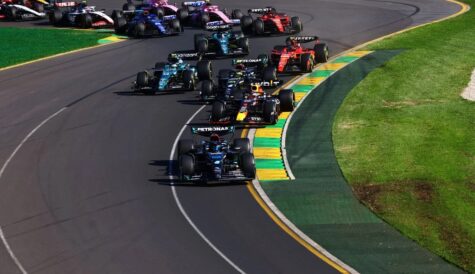The return of bundling

Amid a looming recession, TV operators are facing the harsh implications of the global cost-of-living crisis. This has been apparent with rising cuts across staff, operations, and content, with even the giant streamers heavily affected.
However, a revival of bundling may be the way forward, with streamers going back to the basics, adopting the old school cable-like bundled offerings to boost profits.
Warner Bros. Discovery president and CEO David Zaslav speaking at the Goldman Sachs Communacopia and Technology conference said that the old model of cable bundling was “a good and nourishing experience” for consumers.
Despite cord-cutting and the decline of cable, he said that bundling is back and with the ongoing disruption of the media industry it could “activate a quicker transition to some of us in the content business bundling together to create a better consumer experience.”
Warner Bros. Discovery has put this to the test with the release of all of AMC’s content on combined streamer Max for the next 60 days to see if it enabled AMC to grow its own consumer product. Other examples of moves in this direction include the Warner Bros. Discovery licensing deal with Netflix, to stream a selection of HBO titles on Netflix as well as Max.
The WBD boss explained that putting more into the ‘streaming bundle’ could enable the company to increase prices.
“Price has come down for premium content, but investment has gone up,” Zaslav said. “When we have raised prices the loss to us has been very minimal.”
SVODs’ redirection to pay TV-like bundled offerings presents a wider pool of revenue and could help reduce subscription churn.
Similarly, Paramount Global boss Bob Bakish also supports the idea of leaning more towards partnerships and bundling for the distribution of streaming service Paramount+, both domestically and internationally.
During a conversation at the Goldman Sachs Communacopia and Technology conference, Bakish said that “as we look at expansion beyond the markets we are in, I believe partnerships will figure more prominently.”
“We believe in the power of partnerships, which drive acquisition and retention,” he said. “That is like a virtual restructuring of the industry.”
During an analyst call on the company’s quarterly financials, Bakish said the combining of Paramount+ and Showtime into one service in the US, which launched in June, had created $700m in savings. The media giant also partnered with Comcast to launch European joint-venture SkyShowtime across 21 markets in the continent.
The Paramount CEO noted at the conference that the company had taken the partnership model a stage further outside the US with hard-bundling of Paramount+, which meant slightly lower revenues but zero acquisition costs.
He also said “the more attractively priced, skinnier entertainment bundle” will help to combat cord-cutting and is attractive to pay TV viewers.
While the revival of bundling has been compared with the legacy cable model, Omdia’s principal analyst for the Media & Entertainment, Max Signorelli, points out that SVODs’ approach to bundling is more evolved compared to the typical pay TV model.
He said, “The age of rapid standalone video growth is now largely behind us, as many top platforms approach saturation in their current state. As customer acquisition and retention costs grow, many video services are innovating with new tiers, hybrid offerings and indeed bundles to drive future growth. Although the latter sounds similar to traditional pay TV, the distinction this time around is increased flexibility for consumers, who are significantly more likely to want to jump between services as their choices have exponentially grown over the years.”
We also saw the significance of bundling on a smaller scale this week, with Viaplay Group entering into a multi-year partnership with telco operator Vodafone Greece that will see the Nordic streaming platform deliver Viaplay Select content to Vodafone TV’s subscribers in the region.
The deal follows the company’s recent struggles, which saw the Nordic-based media outfit cut more than 25% of its staff and begin pulling out its operations across the Baltics, UK, US, Canada and Poland to “re-focus on the Nordics and Netherlands”.
Content distribution deals with local operators outside of its market is not a new strategy, with previous Viaplay partnerships struck with Deutsche Telekom and Canal+. However, the Vodafone Greece partnership could point the way to continued growth for the operator through partnerships with distributors.
Tony Gunnarsson, principal analyst, TV, Video & Advertising at Omdia, stated in a report that “as the number of bundling partnerships has steadily grown, the quality of the bundles themselves have also greatly improved, resulting in more attractive offers to customers. This presents a much more nuanced outlook for the future of SVOD, where a growing proportion will be driven by operator bundling and carrier billing.”
The future may be streaming, but recent developments indicate that bundling may be the future of streaming, at least in the current economic climate.



